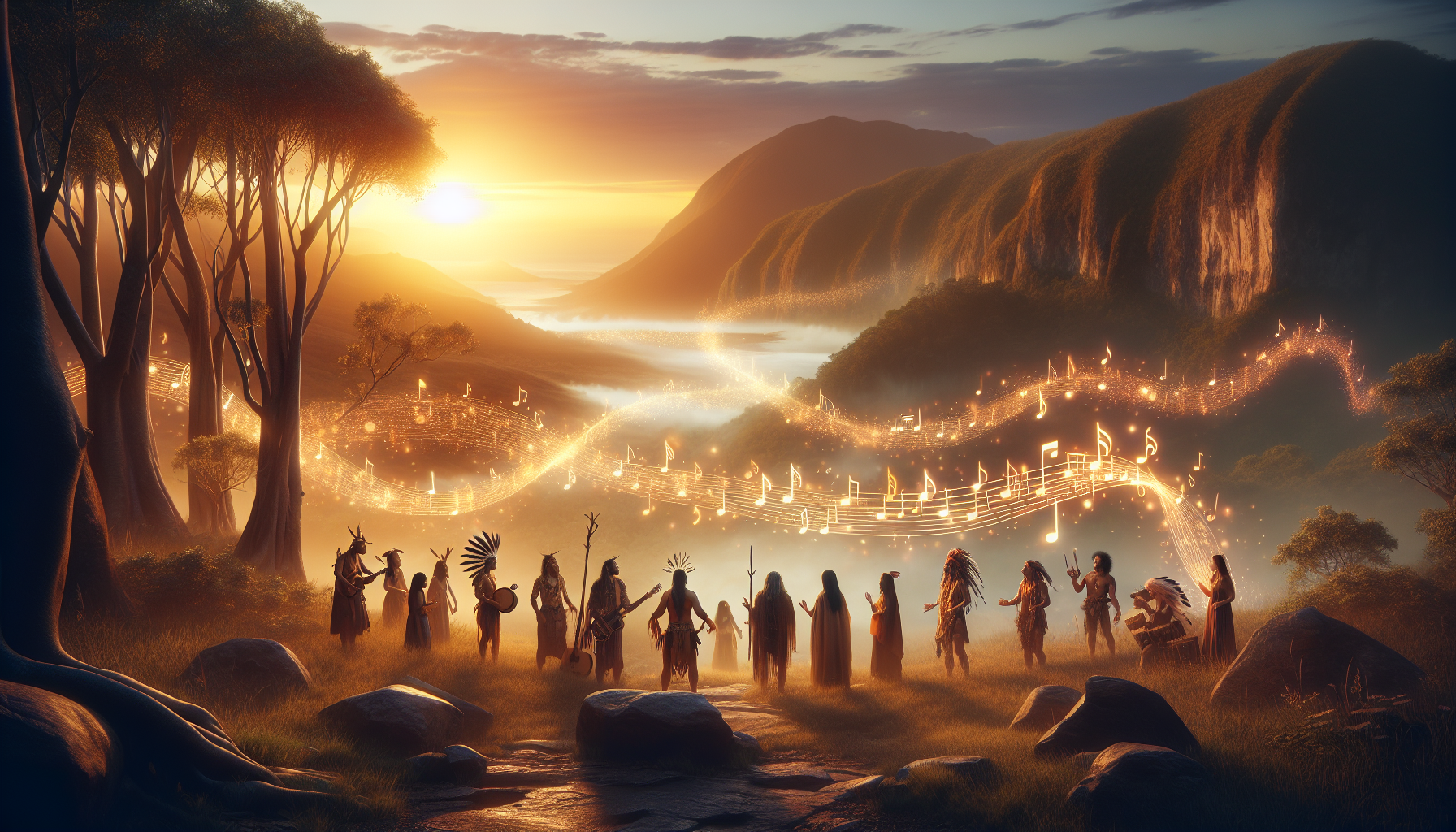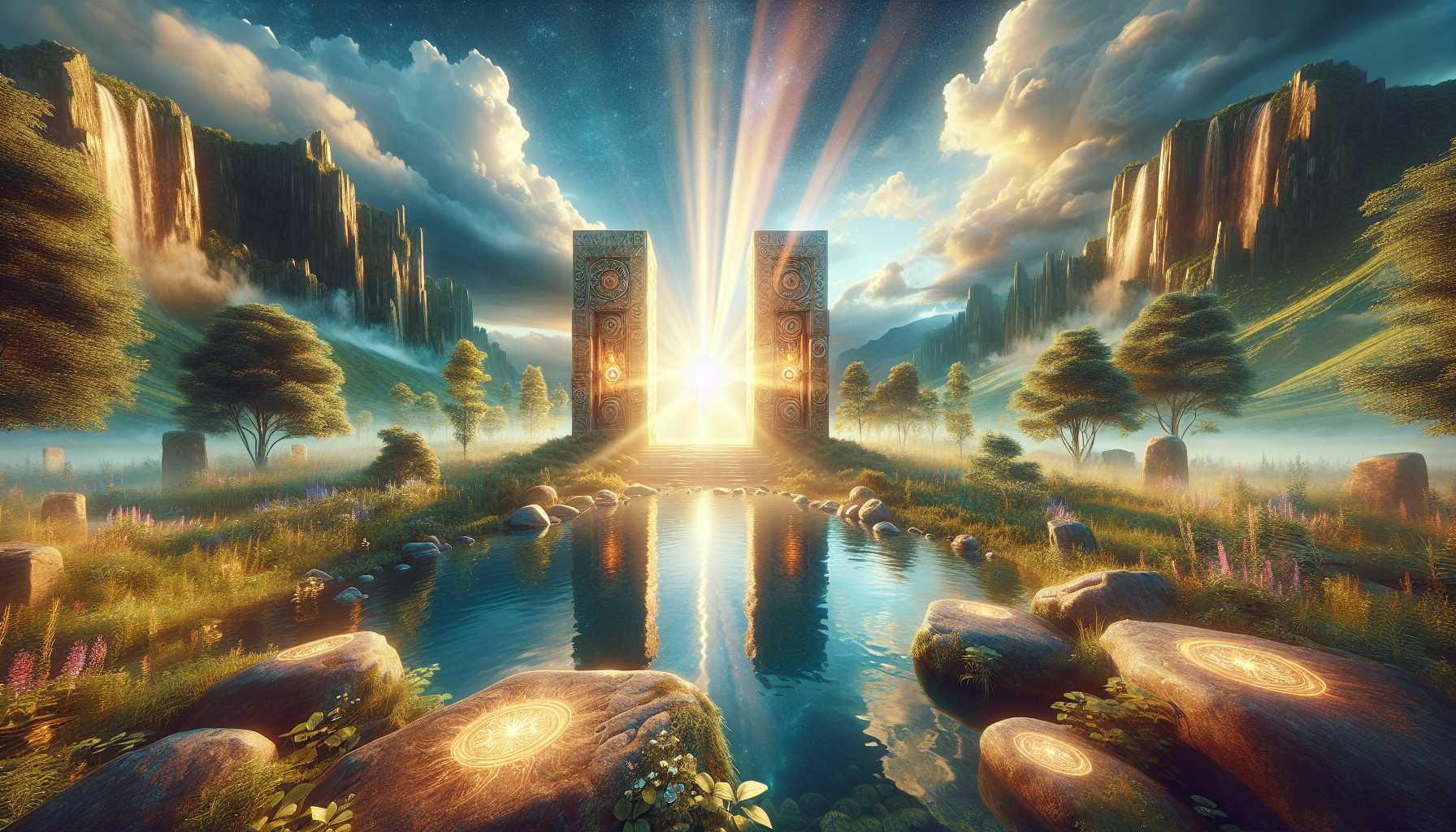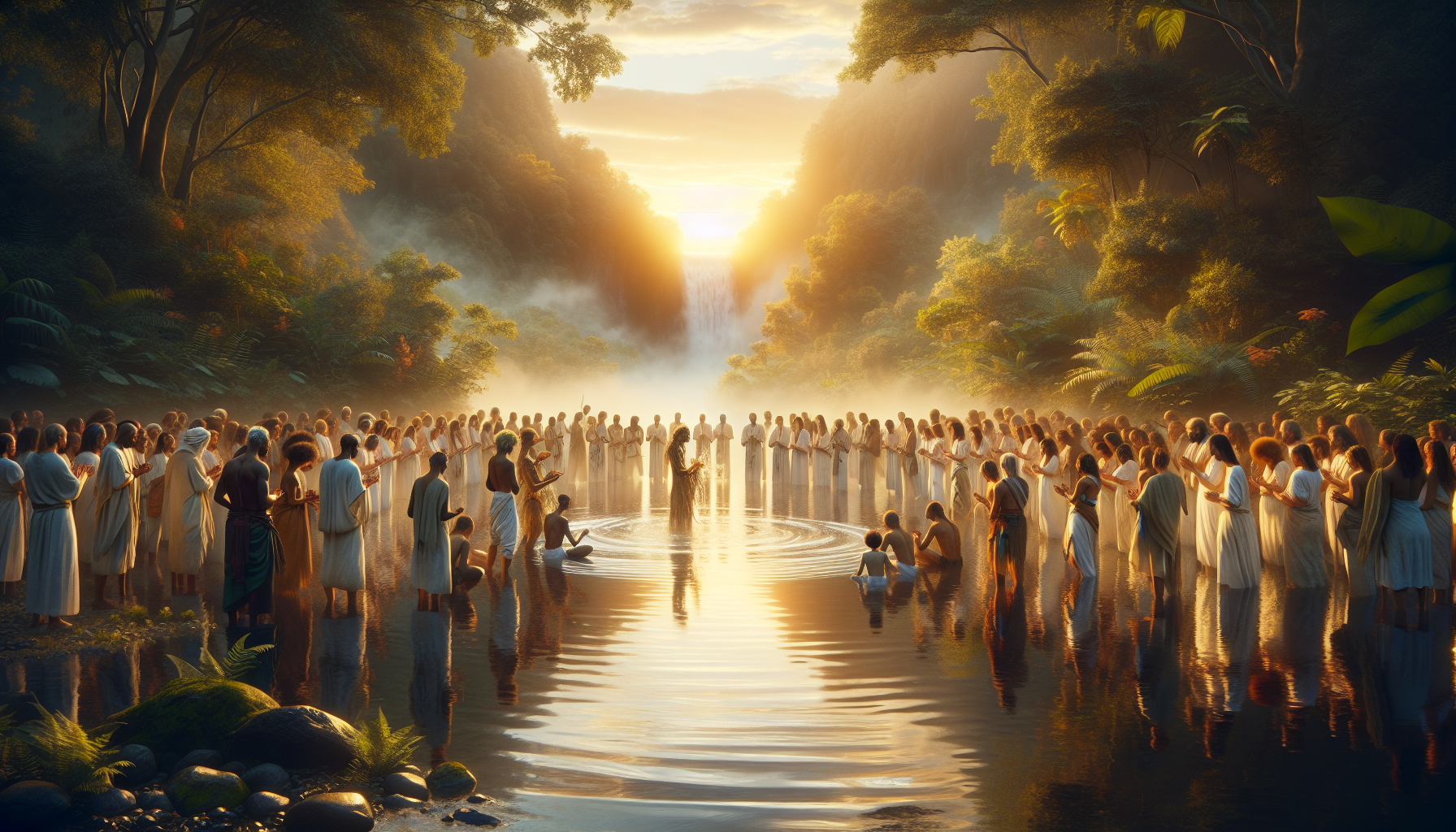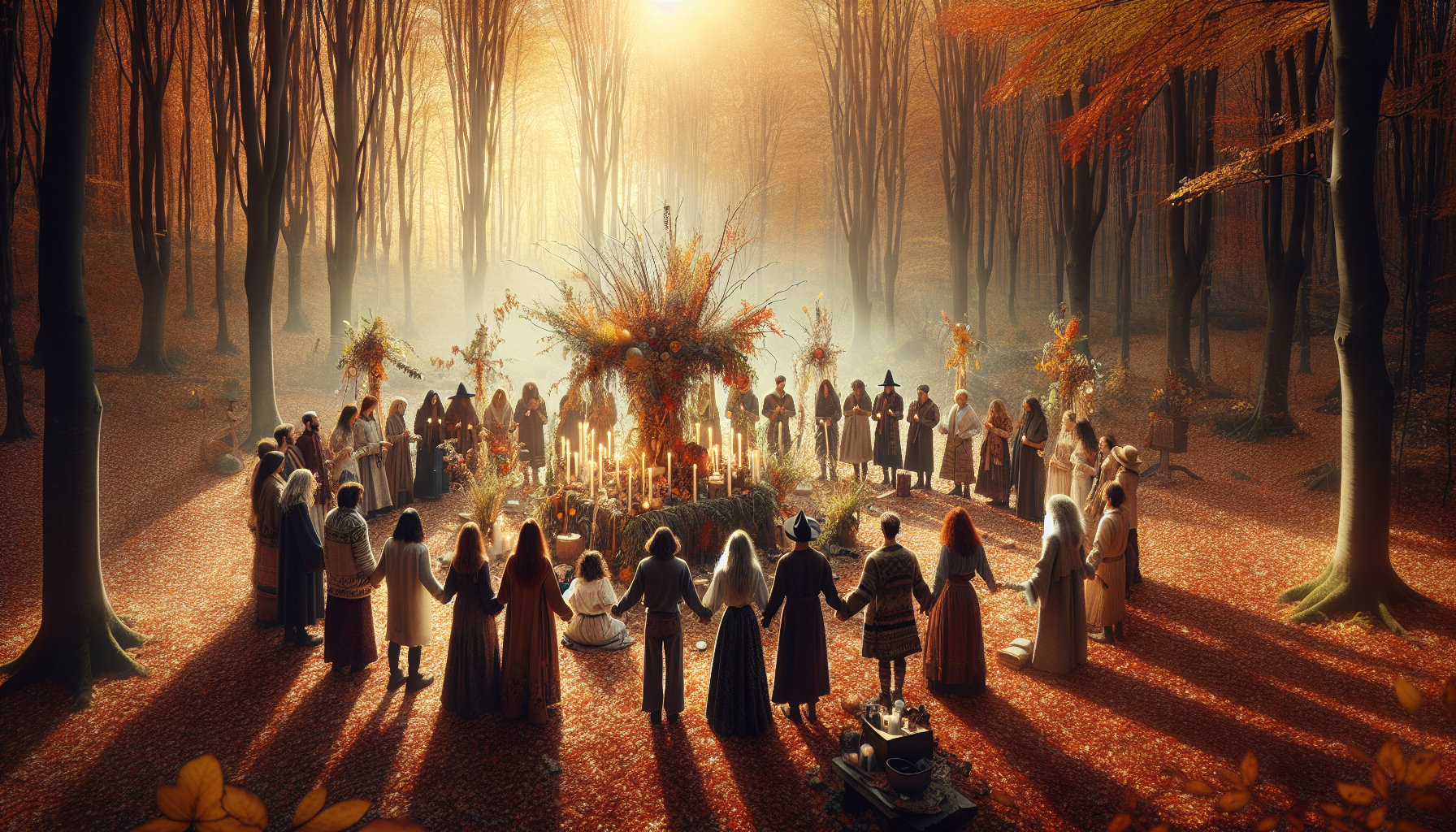In a world where technology often overshadows tradition, the ancient art of storytelling through music remains a vibrant thread weaving together cultures, histories, and geographies. At the heart of this tapestry lies the enchanting concept of “Songlines,” an intricate blend of music, spirituality, and navigation that has guided Indigenous Australian cultures for millennia. But what exactly are Songlines, and why do they hold such a powerful allure? This article invites you to embark on a journey of discovery, exploring how these melodic maps serve as a bridge between the past and the present, uniting diverse worlds through the universal language of music. 🌏🎶
Songlines, also known as “Dreaming Tracks,” are more than just melodies or stories. They are a profound expression of identity and connection, carrying the spiritual essence of the land and its people. By tracing the footsteps of their ancestors, Indigenous Australians navigate vast landscapes, embedding their history and cosmology in the very earth they walk upon. Each Songline is a living narrative, rich with the teachings of the Dreamtime—the time of creation when ancestral beings shaped the world. As we delve into this fascinating realm, we will explore how Songlines function as both oral history and navigational tool, guiding travelers across vast distances with an intimate understanding of the environment.
But the magic of Songlines is not confined to Australia alone. Throughout this article, we will traverse the globe, uncovering the parallels and intersections of music and storytelling in various cultures. From the epic sagas of the Norse Skalds to the griot traditions of West Africa, we will see how different societies have used song to convey wisdom, history, and cultural identity. This exploration will reveal that while the specifics of each tradition may differ, the underlying power of music to connect and transform remains a universal truth. Music, as a vessel of shared experience, transcends linguistic and cultural barriers, offering a profound connection to our collective human heritage.
In the following sections, we will dive deeper into the structure and significance of Songlines, examining their role in preserving cultural memory and fostering environmental stewardship. We will discuss the contemporary relevance of these traditions in a rapidly changing world, and how they offer insights into sustainable living and community resilience. Through interviews with Indigenous custodians, musicians, and cultural historians, we will gain a richer understanding of the enduring legacy and modern adaptations of Songlines. By the end of this exploration, you’ll not only have a deeper appreciation for this ancient practice but also a renewed sense of wonder at the power of music to unite and inspire across ages and continents.
Understanding the Enigmatic Concept of Songlines
Songlines, or Dreaming tracks, are an integral aspect of Aboriginal culture in Australia, providing a unique way to navigate and connect the vast landscapes. These are essentially paths across the land (or sometimes the sky) that trace the journeys of ancestral spirits as they created the world during the Dreamtime. Each Songline marks the route followed by one of these beings as they sang the land into existence, and these songs are a way of passing down knowledge of geography, culture, and spirituality across generations. Understanding the depth and significance of songlines requires delving into the symbiotic relationship between the land, the people, and the music.
The concept of songlines reveals a complex web of songs, stories, and ceremonies, illustrating how deeply interconnected the Aboriginal people are with their environment. The songs serve as musical maps, each containing essential information that guides travelers through the land. This relationship transcends mere navigation, embodying a spiritual and cultural connection that affirms identity and belonging to the land. The storytelling aspect of songlines keeps traditions alive, serving as a powerful tool for education and cultural preservation.
Songlines are not just about travel but are a comprehensive way to understand the world. They connect people to their ancestors and the creation myths, offering a sense of continuity and responsibility for maintaining the balance and harmony of their environment. This intricate knowledge system integrates aspects of ecology, astronomy, and social law, serving as a testament to the depth and sophistication of Aboriginal wisdom. To explore this concept further, let’s consider how songlines are utilized in practical terms and their significance in modern contexts.
The Role of Songlines in Navigation and Survival
For the Aboriginal people, survival in the harsh Australian landscape relied on an intimate understanding of the terrain and its resources. Songlines were crucial in navigating vast distances, where landmarks might be sparse. Each line corresponds to specific tracks and topographical features, with verses of songs describing the landscape, waterholes, flora, and fauna. This mnemonic device is incredibly efficient, encoding vast amounts of information that are passed down orally from one generation to the next.
As you traverse the land, the song guides you through its verses, each correlating to a different geographical feature or resource. This practice not only aids in physical navigation but also ensures that knowledge of sustainable practices is maintained. For example, the songs might indicate when certain resources are in abundance or when it is time to move on to another area to avoid depleting local resources.
In modern times, songlines hold a particular relevance as indigenous communities strive to assert their rights and preserve their culture. Many have begun to map these ancient paths using technology to ensure that this knowledge is not lost. This adaptation demonstrates the resilience of Aboriginal culture and the enduring significance of songlines in maintaining a connection to the land.
Songlines and Their Influence on Modern Music
While songlines are deeply rooted in Aboriginal tradition, their influence extends beyond cultural boundaries, impacting modern music in unique ways. The idea of using music as a narrative tool resonates with many contemporary musicians who seek to tell stories through their art. Songlines can be seen as precursors to concept albums, where each track contributes to a larger narrative theme.
Additionally, collaborations between Aboriginal musicians and artists from other genres have brought songlines into the global music scene. This fusion of traditional and contemporary sounds has created a vibrant musical landscape, offering new ways for audiences to engage with these ancient traditions. Such collaborations not only showcase the beauty of songlines but also foster a deeper understanding and appreciation of Aboriginal culture among wider audiences.
For a visual and auditory experience of how songlines influence music today, watch the video below. It offers insights into the creative process of blending traditional Aboriginal music with modern genres, illustrating the transformative power of these ancient songs.
Discover the Influence of Songlines in Modern Music
Songlines as Cultural Connectors: Bridging Worlds
Beyond their practical uses, songlines serve as vital cultural connectors that bridge different worlds. They are a means of sharing stories and knowledge across communities, reinforcing a sense of unity and shared heritage. In a world that is increasingly globalized, the principles behind songlines offer valuable lessons on the importance of storytelling and the transmission of culture.
The collaborative nature of songlines encourages communal participation, where knowledge is shared and preserved through group performances. This collective engagement strengthens community bonds and fosters an environment where cultural traditions are respected and celebrated. In this way, songlines are not just about preserving the past but are dynamic and evolving, adapting to the needs and challenges of the present.
Moreover, songlines highlight the interconnectedness of all things, a concept that resonates with contemporary ecological and sustainability movements. By viewing the land as a living entity with which humans have a reciprocal relationship, songlines promote a sense of stewardship and responsibility. This perspective is crucial in addressing global environmental challenges, offering a model for sustainable living that is rooted in respect and harmony with nature.
Comparing Traditional and Contemporary Uses of Songlines
The table below offers a comparison between the traditional and contemporary uses of songlines, illustrating their enduring relevance and adaptability.
| Aspect | Traditional Use | Contemporary Use |
|---|---|---|
| Navigation | Guides through landscape, indicating resources and sacred sites | Mapped digitally for cultural preservation and tourism |
| Cultural Transmission | Oral tradition for passing knowledge and history | Incorporated into modern media, including music and film |
| Community Connection | Fosters unity and identity through shared stories | Promotes cultural understanding and reconciliation |
Explore the table above to understand how songlines continue to play a crucial role in both preserving and evolving cultural practices. This adaptability highlights their significance as a bridge between the ancient and the modern, demonstrating their potential to connect diverse worlds through music and storytelling.
Embracing the Future of Songlines
The future of songlines lies in their ability to adapt and resonate with contemporary audiences while remaining true to their roots. As more people become aware of the cultural and environmental insights offered by songlines, there is an opportunity to integrate this knowledge into broader educational and sustainability initiatives. By embracing the wisdom embedded in these ancient paths, societies worldwide can benefit from a deeper understanding of their own relationship with the environment and each other.
Educational programs that incorporate songlines can offer unique perspectives on history, geography, and culture. These programs can help bridge gaps in understanding between different cultures, fostering empathy and respect. By learning from the past, current and future generations can be better equipped to address the challenges they face, using the principles of songlines to guide them towards a more sustainable and harmonious future.
In the digital age, the potential to share and expand upon the concept of songlines is vast. Through online platforms and collaborations, the stories and lessons of songlines can reach global audiences, offering a universal language of connection through music. As we move forward, it is essential to ensure that these narratives are shared respectfully and accurately, honoring the rich heritage of Aboriginal culture.
In summary, songlines are more than just a cultural artifact; they are living, evolving pathways that connect people across time and space. As we continue to explore their depth and significance, we uncover not only the magic of these ancient songs but also the potential they hold for creating a more connected and understanding world. ✨

Conclusion
Conclusion: Discover the Ancient Magic of Songlines: Connecting Worlds Through Music
In our exploration of songlines, we have embarked on a fascinating journey through time and culture, unveiling the profound connections that music fosters across generations and geographies. Songlines, an integral part of Indigenous Australian culture, serve not only as navigational tools but also as vibrant, living tapestries that weave together stories, history, and the very essence of existence. By delving into the magic of songlines, we have gained a deeper appreciation for how music transcends mere sound, acting as a bridge between worlds, both ancient and modern.
Throughout this article, we have highlighted several key points that underscore the significance of songlines. First, we examined the historical and cultural context of songlines, understanding them as more than just a means of navigation. They are, in essence, oral maps that guide travelers through the vast Australian landscape while embedding rich narratives of the Dreamtime—stories of creation and the spirits of the land. This intrinsic connection between geography and mythology showcases the unique way Indigenous Australians perceive and interact with their environment.
Furthermore, we explored how songlines act as a communal repository of knowledge, preserving the wisdom of ancestors through music and oral tradition. In a world that increasingly prioritizes written and digital records, the oral transmission of knowledge via songlines emphasizes the importance of memory, community, and continuity. It also invites us to reconsider the diverse ways knowledge can be shared and retained across generations.
Another critical aspect we touched upon is the role of songlines in fostering a sense of identity and belonging. For Indigenous Australians, songlines are a living connection to their ancestors and the land, nurturing a profound sense of place and identity. This connection is not just about physical location but also about spiritual belonging—an understanding that every rock, tree, and river is imbued with stories and songs that echo the voices of those who have come before.
Moreover, the global resonance of songlines has been explored, illustrating how this ancient practice offers valuable insights for contemporary society. In a world often characterized by fragmentation and disconnection, the principles embodied by songlines remind us of the power of music and storytelling to unite, heal, and inspire. Music, as demonstrated by songlines, is a universal language that transcends cultural and linguistic barriers, fostering empathy and understanding among diverse peoples.
As we conclude our journey through the magical realm of songlines, it is crucial to acknowledge the ongoing significance and resilience of Indigenous cultures. Despite centuries of colonization and cultural erosion, the tradition of songlines endures, a testament to the strength and adaptability of Indigenous communities. By recognizing and respecting these traditions, we not only honor their heritage but also enrich our understanding of the world and our place within it.
In light of these reflections, I encourage you, dear reader, to delve deeper into the world of songlines and Indigenous cultures. Engage with the music and stories that have shaped and continue to shape human history. Reflect on how you can incorporate the principles of connection, storytelling, and respect for the natural world into your own life. Share what you have learned with others, sparking conversations that bridge cultural divides and foster mutual understanding.
By engaging with the ancient magic of songlines, we open ourselves to a broader, more inclusive perspective—one that recognizes the interconnectedness of all life and celebrates the diversity of human expression. Let us carry forward the wisdom of songlines, using music and stories to weave a more harmonious world.
Feel free to comment below, share your thoughts, or express how the concept of songlines resonates with your own experiences. Let’s continue this dialogue and explore together the boundless potential of music to connect worlds and inspire change. 🌏🎶
For further exploration, I recommend visiting resources like and The Conversation for in-depth insights into the cultural significance and contemporary relevance of songlines.
Toni Santos is a visual storyteller and symbolic naturalist whose creations explore the hidden ecologies and forgotten bonds between humans and nature, as whispered through ancient lore. Through an intuitive and myth-sensitive lens, Toni reveals the sacred choreography between flora, fauna, and human spirit — a world where trees once spoke, rivers remembered, and every herb carried a secret name.
His journey is rooted in the esoteric — in the rituals of forest-dwellers, the botanical codes of shamans, and the unspoken pacts that shaped how ancient peoples lived in deep, reciprocal harmony with the natural world. From sacred groves to serpent-guarded springs, each of Toni’s works reflects a symbolic relationship long obscured by modern forgetfulness.
With a background in visual design and ancestral aesthetics, Toni merges storytelling with sacred ecology. His pieces don’t simply illustrate — they channel. Drawing from myth, mysticism, and lost herbal traditions, he crafts visuals that resonate with the old wisdom: that nature is not background, but kin.
As the creative spirit behind Vizovex, Toni shares collections, visual studies, and articles that illuminate the occulted connections between human life and the wild world. His work calls on us to remember — not just with the mind, but with the senses and the soul — the profound dialogues our ancestors once had with earth, plant, and animal.
His work is a tribute to:
The mythic language of trees, stones, and roots
Forgotten pacts between healers and the wilderness
The sacred knowledge carried in nature’s unseen patterns
Whether you’re a seeker of ancient plant-lore, a mystic attuned to seasonal cycles, or simply someone who hears the forest speak, Toni welcomes you to wander a space where symbolism, nature, and spirit entwine — one myth, one leaf, one vision at a time.





